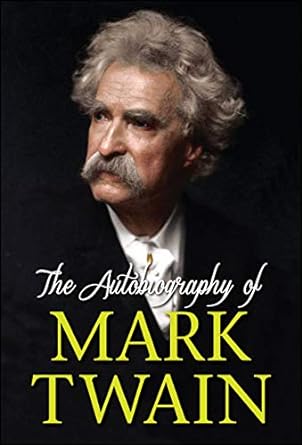
The Autobiography of Mark Twain
In his autobiography Mark Twain tells his story in his own way, freely expressing his joys and sorrows, his affections and hatreds, his rages and reverence—ending, as always, tongue-in-cheek: "Now, then, that is the tale. Some of it is true."
More than the story of a literary career, this memoir is anchored in the writer’s relation to his family—what they meant to him as a husband, father, and artist. It also brims with many of Twain’s best comic anecdotes about his rambunctious boyhood in Hannibal, his misadventures in the Nevada territory, his notorious Whittier birthday speech, his travels abroad, and more.
Twain published twenty-five chapters from his autobiography in the 'North American Review' in 1906 and 1907. "I intend that this autobiography... shall be read and admired a good many centuries because of its form and method—form and method whereby the past and the present are constantly brought face to face, resulting in contrasts which newly fire up the interest all along, like contact of flint with steel."
BEST DEALS
About the Author
Mark Twain is the pseudonym of Samuel Langhorne Clemens (1835 - 1910). He was born and brought up in the American state of Missouri and, because of his father's death, he left school to earn his living when he was only twelve. He was a great adventurer and travelled round America as a printer; prospected for gold and set off for South America to earn his fortune. He returned to become a steam-boat pilot on the Mississippi River, close to where he had grown up. The Civil War put an end to steam-boating and Clemens briefly joined the Confederate army - although the rest of his family were Unionists! He had already tried his hand at newspaper reporting and now became a successful journalist. He started to use the alias Mark Twain during the Civil War and it was under this pen name that he became a famous travel writer. He took the name from his steam-boat days - it was the river pilots' cry to let their men know that the water was two fathoms deep.
Mark Twain was always nostalgic about his childhood and in 1876 The Adventures of Tom Sawyer was published, based on his own experiences. The book was soon recognised as a work of genius and eight years later the sequel, The Adventures of Huckleberry Finn, was published. The great writer Ernest Hemingway claimed that 'All modern literature stems from this one book.'
Mark Twain was soon famous all over the world. He made a fortune from writing and lost it on a typesetter he invented. He then made another fortune and lost it on a bad investment. He was an impulsive, hot-tempered man but was also quite sentimental and superstitious. He was born when Halley's Comet was passing the Earth and always believed he would die when it returned - this is exactly what happened.












